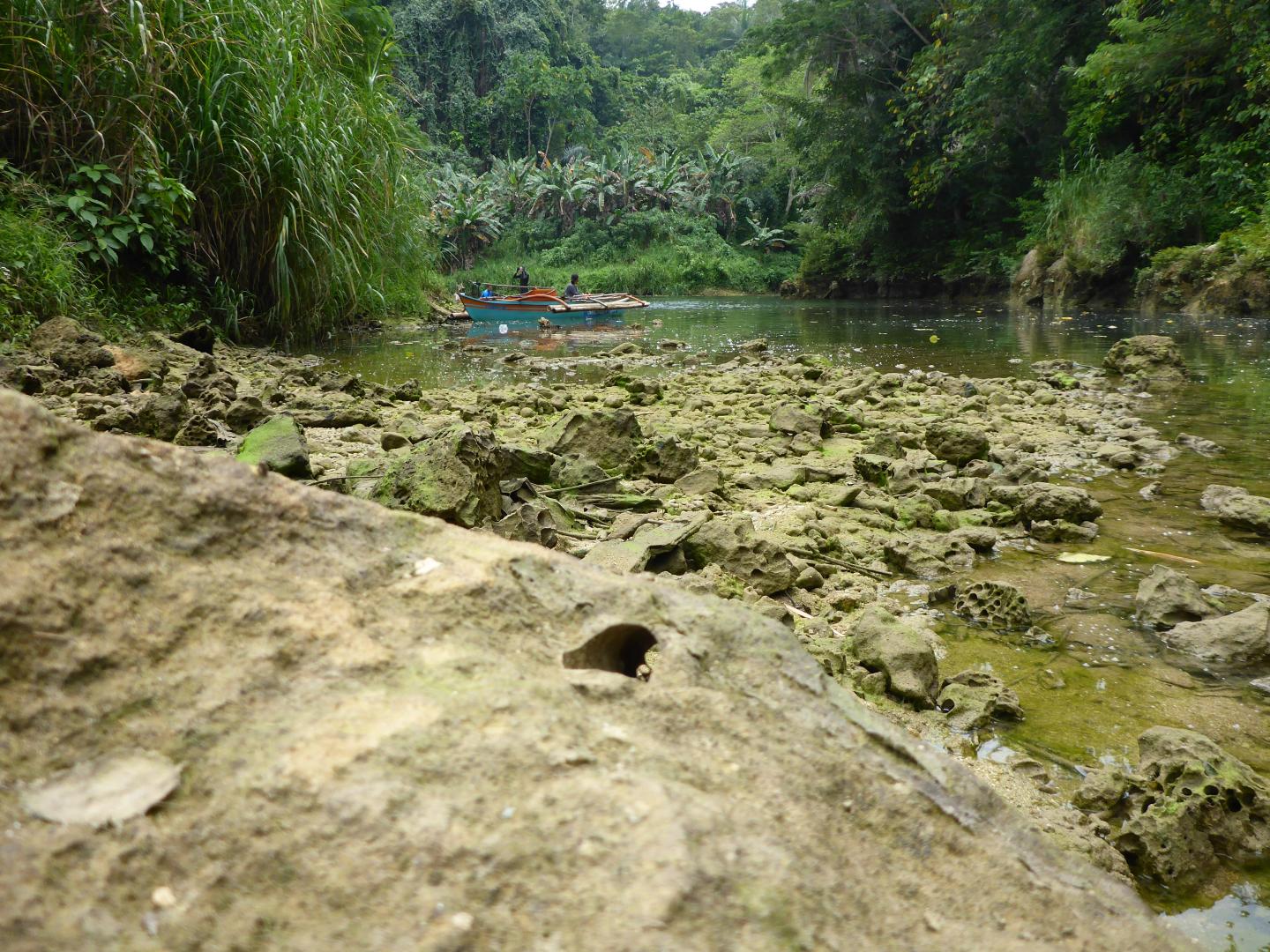UMass Amherst scientist among international team of researchers studying biodiversity with an eye toward developing new drugs

Credit: Marvin Altamia and Reuben Shipway
A newly identified genus and species of worm-like, freshwater clam, commonly known as a shipworm, eats rock and expels sand as scat while it burrows like an ecosystem engineer in the Abatan River in the Philippines.
Local residents of Bohol Island tipped off an international group of scientists, including University of Amherst post-doctoral researcher Reuben Shipway, to the watery location of the bivalve, which the scientists named Lithoredo abatanica, using the Latin words for rock (litho) and the last two syllables of shipworm (teredo). Locals call the shipworm “antingaw,” and new mothers are said to eat them in an effort to enhance lactation, Shipway says.
“These animals are among the most important in the river and in this ecosystem,” says Shipway, a marine biologist working in the microbiology lab of professor Barry Goodell and lead author of the paper that describes L. abatanica, published in the Proceedings of the Royal Society B. “As they bore elaborate tunnels in the limestone bedrock, these animals change the course of the river and provide a really rich environment for other aquatic species to live in. So far, this is the only place on earth that we know these animals exist.”
Co-authors include Marvin Altamia and Daniel Distel of Ocean Genome Legacy Center at Northeastern University, where Shipway previously worked; Gary Rosenberg of Drexel University; Gisela Concepcion of the University of the Philippines; and Margo Haygood of the University of Utah.
“Most other shipworms are as skinny as your finger,” Shipway says. “These animals are quite chubby, robust. They look really different. Where they get their nutrition we don’t know.”
It’s the second new genus and species of shipworm recently discovered in the Philippines by this international team of researchers known as the Philippine Mollusk Symbiont International Collaborative Biodiversity Group, funded by the National Institutes of Health. The other new bivalve, the impossibly elongated, pink and pinstriped Tamilokus mabinia, eats wood like most shipworms and was found to be filled with bacteria that provide its nutrition. The team of scientists produced a video abstract detailing its identification.
The researchers analyzed L. abatanica‘s bored and ingested rock and used micro-computed tomography (CT) to create three-dimensional scans of the shipworm, revealing its unique anatomy. DNA was extracted for sequencing and whole animals up to four inches long were taken and preserved.
The new shipworm also may provide new insights for paleontologists. Until recently, fossil borings in rocky substrates were thought to be a marker for ancient marine habitats, Shipway explains. L. abatanica shows that such fossils might mark ancient freshwater sites as well.
Shipway says the international collaborative aims to understand and preserve biodiversity, boost research capabilities of partners in the Philippines and, most importantly, use the biodiversity the animals reflect for new drug discovery.
He concludes, “This is one of the most noble projects I’ve ever been involved in.”
###
Media Contact
Patty Shillington
[email protected]
Related Journal Article
http://dx.



